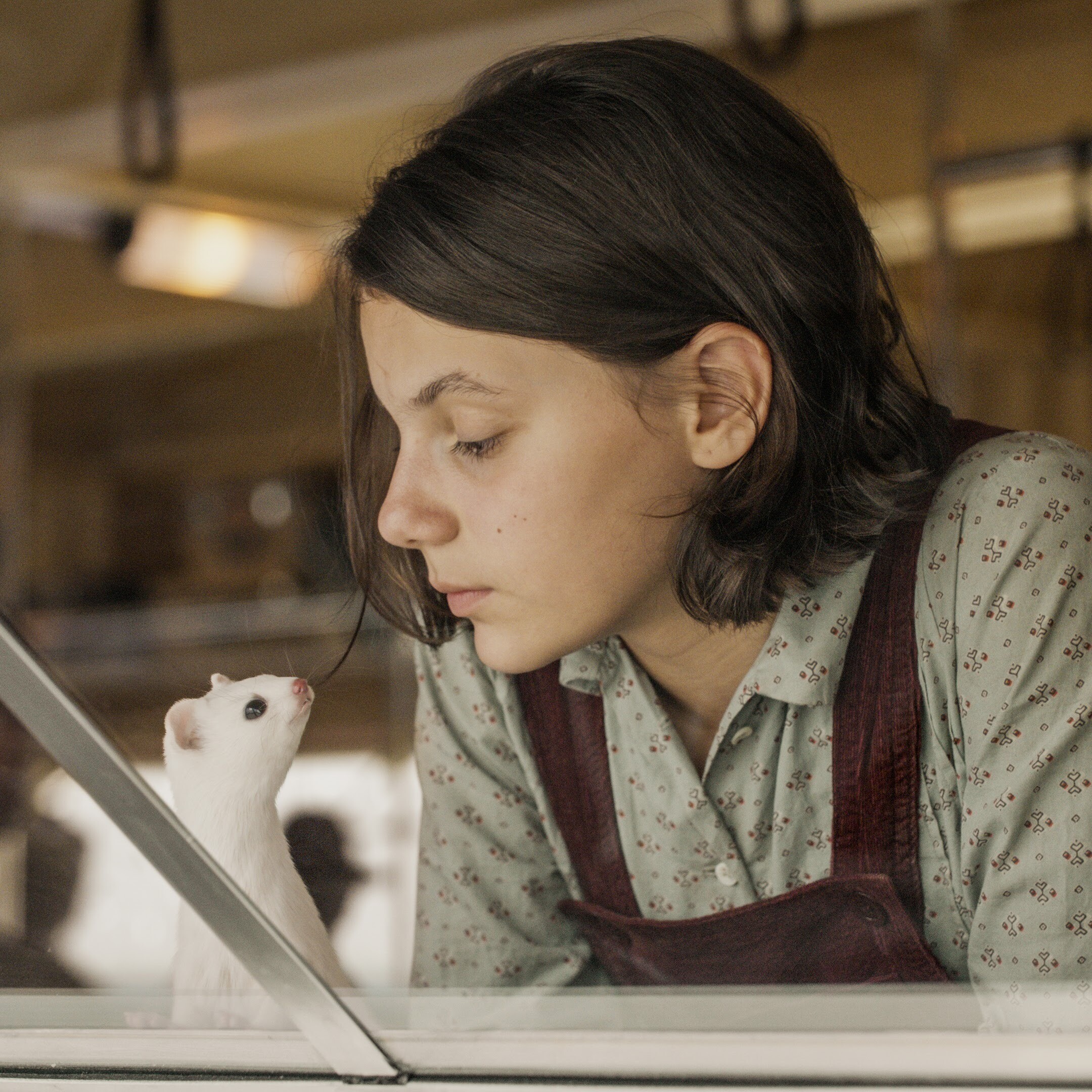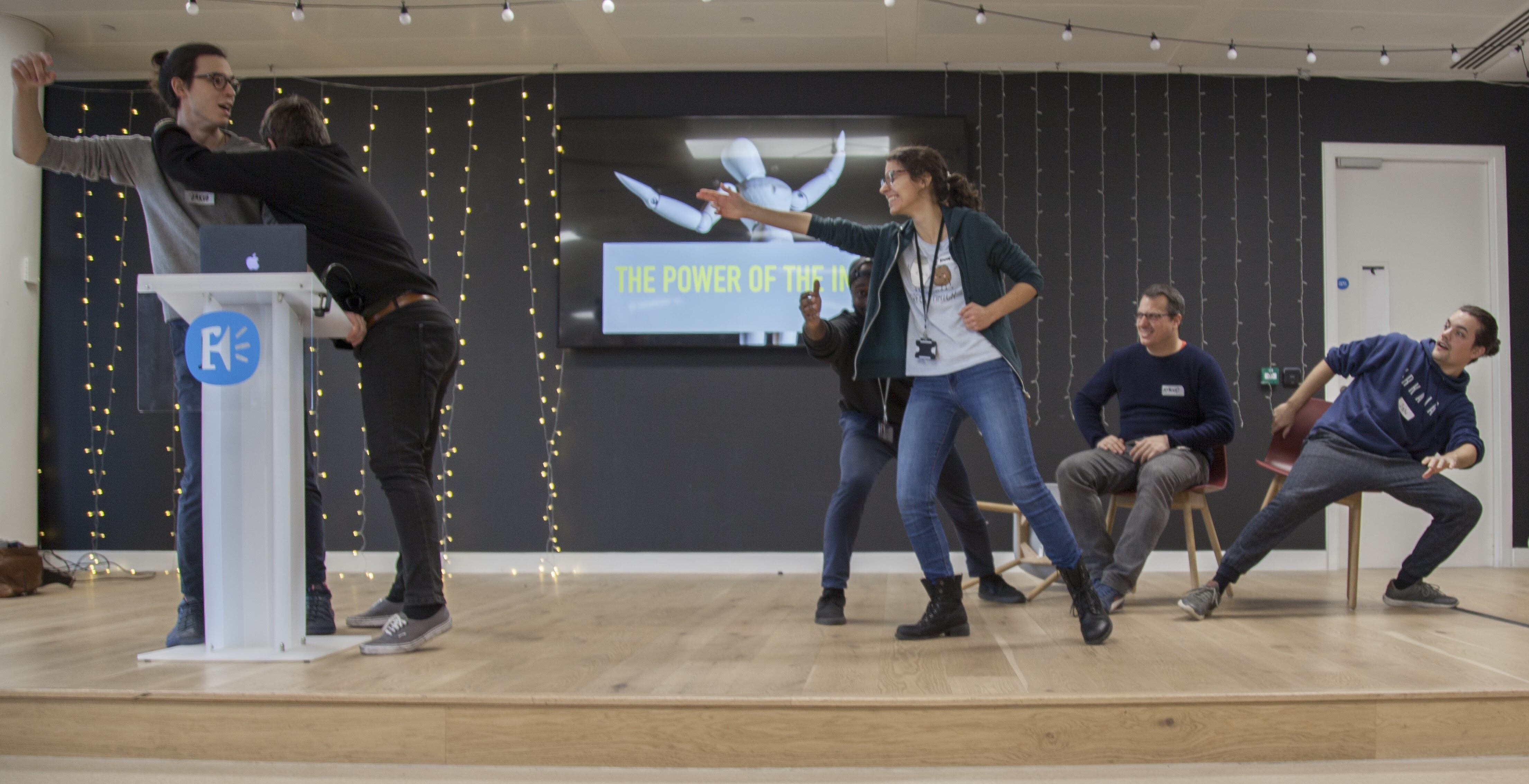Companies set a high bar for animators and it seems to keep going up. Junior animators still need to be able to produce professional-level work. As a result, “entry-level” in animation is already several rungs up the ladder. So how do you climb that high before you’ve been given an opportunity? How do you fill the gap between what you’ve accomplished in school and what companies demand? We’ll explore the artistic, technical, and life skills you’ll need to foster to be successful at becoming an animator.
Observation
Animators are keen observers. While sitting on a train, animators will stare at others, often making them nervous and causing them to change seats and shoot back angry looks. They are looking at the way pose and movements describe emotion. A passenger sits on the edge of their seat and leans forward which shows their engagement and interest. A quick movement of the eyeball shows that they are attracted to the person across from them. The awkward movement of their feet betrays their nervousness. Animators are always studying others and creating a mental gallery of poses and movements to use in their work. Often, they’ll carry a sketchbook with them to draw from life which helps build this catalog and cement the memory in their mind.
Observation isn’t limited to humans. Animators are often tasked with bringing animals or fantastic creatures to life. While a group gathers to dote on an adorable puppy, the animator notices how the puppy rolls on his back with a subtle twist to his spine and holds his paws up limply, while his tongue stays out to the side and his eyes are open wide.
His Dark Materials is a television series in which Framestore animators brought many talking animals to life. Photorealistic talking animals are particularly tricky to do well. Animals don’t have lips like humans, so having them speak carries the risk of looking wrong and fake. When having them express emotions with their bodies, the use of typical human poses and movements may not map well to the body and behavior of an ermine, for example. Observation of animal behavior was key to the success of the animation. Reference footage was shot at various zoos as well as plenty of time searching the internet for reference. We even brought live ferrets into the office for the artists to interact with first hand.

The key to believably animating the creatures is realizing that their expressions are rooted in something that animal is observed doing, a flick of an ear, a quick movement of the head, a crouching pose – these behaviors were mapped to what they were meant to be emoting, rather than trying to force the animal to do something human, like shrug their shoulders. The success in animating these creatures was rooted in keen and extensive observation.
Performance
Animators are actors. Some come to animation after being unsuccessful on the stage and screen. Others never wanted that kind of attention, and express themselves with a pencil or computer. Both actors and animators imbue characters with life. The actors’ tools are their bodies and voice. The animators’ tools are their pencils and character rigs. But at its heart, it’s the same job. Acting training can benefit the animator, particularly if they were a member of the group that doesn’t like being in front of an audience or lens. It forces them out of their shell and gets them learning to use their body to create emotive poses and movement that they can use in their work.
Improv is a term that’s applied to an art form that’s created without planning on the fly, and improv training is a great way to improve an animator’s ability to create inspired reference and more unique choices. Beginning with warm-up exercises, they move into games that challenge the animator to listen, observe, react, and create unique choices. Animations are brought to life when the movements and expressions you choose are the less obvious choice and the choice that tells you something about the background of the character.
IMPROV4 is a group in London offering this training successfully. In one exercise, they ask everyone to walk around the room normally. Then they tell them to walk around like an old person. After a few moments, they stop the group, and ask “How many of you have a parent or relative over the age of 65?” All the hands go up. “How many of them walk with a cane?” They were all pretending to walk slowly and unstably with a cane. The students sheepishly realize their mistake; they made the obvious choice. They’re asked to do it again, drawing on their memory and observation of real people, and bringing to life a unique character that has a backstory.

Drawing
Animators often have one hand on the keyboard and one hand on a mouse, so why should they contort their fingers around a pencil? Why do the best animation companies hold figure drawing classes in their offices, especially as it involves the inconvenience and awkwardness of someone being nude in the workplace?
It goes back to our first point: observation. I had a drawing teacher years ago who was a professional illustrator. He did those romance novel covers, the ones where the man has long hair and a billowy shirt open to his waist, and the woman’s breasts are nearly bursting out of her corset while they kiss. As cheesy as those images may be, they are usually quality drawings with an understanding of anatomy and pose. When he demonstrated drawing for our class, it seemed like every pencil stroke was in the right place the first time, no movement of his hand was wasted. This was simultaneously inspiring and discouraging. He said, “I’m no better at drawing than you.” The class exhales through their nose in unison. “There is nothing special about this hand or these eyes. I have just trained myself to draw what I see. To look carefully and mark down what is in front of me.”

It was from that class that I accepted that everyone who had the desire and dedication could learn to draw well, that is, they could draw the human figure in proportion. The key is observation. Drawing what you see. Not what you think it should look like, but what is actually there in front of you. Children draw a face with two eyes on the same side of the head when drawing a profile because they think, “a face has two eyes.” It takes practice to see what is in front of you rather than what your mind tells you it should be.
So drawing isn’t about training your hand to make nice lines. It is about training your mind to observe carefully, accurately, and in detail.
Practice
Every time my son is impressed with what someone does, and he asks how they do it, it’s the same answer – practice. “How does that couple at the pub stay there for eight hours sitting in the sun and drinking beer non-stop, only to cap it off with a couple of whiskeys?” Practice. How does someone learn to paint, draw, or animate well? Practice. They say you have to do 10,000 bad drawings before you do a good one. Animation is the same. It’s not like a fairy sprinkled pixie dust on a child who grew into a beautiful animator and suddenly everything they produced was brilliant. They’ve been working on it. They’ve been working on it for years. If you want to be a good animator, get going on doing your 10,000 bad animations.
Guidance and Feedback
Companies that make visual effects have dailies. Every day animators sit in a room with their supervisor and show their progress up on the screen. And every day, that supervisor offers feedback, focusing on what needs to be improved to get the shot finalized. No shot gets finalized on the first version. Sometimes they have to do 700 versions before they get it right. It might be that the character isn’t expressing an emotion in a believable way; snakes don’t frown. It might be that the physics look wrong; they jumped too fast or landed too hard. Or maybe the animation is brilliant, but it doesn’t work in the context of that scene or that point in the story. Excellent animation is the result of improving it over multiple versions with expert feedback.
It’s important to be a critic of your own work. It can be hard to keep perspective on the work you create because you’ve been working on it so closely, and the mind tends to accept as normal and good what it finds familiar. The first time you hear a pop song you might not like it. But if you hear it enough times, you might start liking it, if only because of the familiarity. You watch your animation the first time and spot something wrong with the arm movement. The video loops, you watch it again, and maybe that arm isn’t so bad. It loops again and the arm looks fine now. I guess I was wrong, it’s fine after all. Job done.
Watch your animation upside down and flipped as a mirror image to get a fresh perspective. Show it to teachers and professionals to get constructive criticism. Show it to grandma, or someone who knows nothing about the process of animation to get their reaction, as they will tend to offer feedback that is purely about the performance and effect of the animation without getting caught up in the technical process.
And don’t get precious about your work. Students will spend days keyframing a character, their timeline a solid red of key ticks which mark the timing of each pose. After they get critique they can be resistant to change. They spent so much time making this, how could they possibly tear it down and start again? The mistake in that thinking is that the hard work was done with the mouse and keyboard. The hard work was done in their mind – conceptualizing the animation and breaking down all the movements. If you have clarity on that, getting your rig to perform what is in your head is relatively quick, especially the second (or third, or seven hundredth) time around.
Summary
Observe: Study life, how people and animals move, and emote.
Performance: Take acting and improv classes and make more inventive choices.
Practice: Practice, practice.
Guidance and Feedback: From yourself, and from others.
And don’t give up. Just as I believe that anyone with the desire and dedication can learn to draw well, I believe the same about animation. Some people believe animators are born, not taught, but I say no. The mistake is not recognizing how long they have been working on their craft. That weird kid in the back of the class who was always staring at people has been practicing observation for years. When it came time to animate she was several steps ahead of the others. You want to become a professional animator? Become like that weird kid. Stare at others. Act the fool. Do embarrassing drawings. Obsessively practice. Listen to feedback and always be willing to tear down your work and start over.
Article authored by Andrew Schlussel. Andrew works as Director of Talent Development at Framestore and teaches at the Academy of Art University, San Fransisco.
